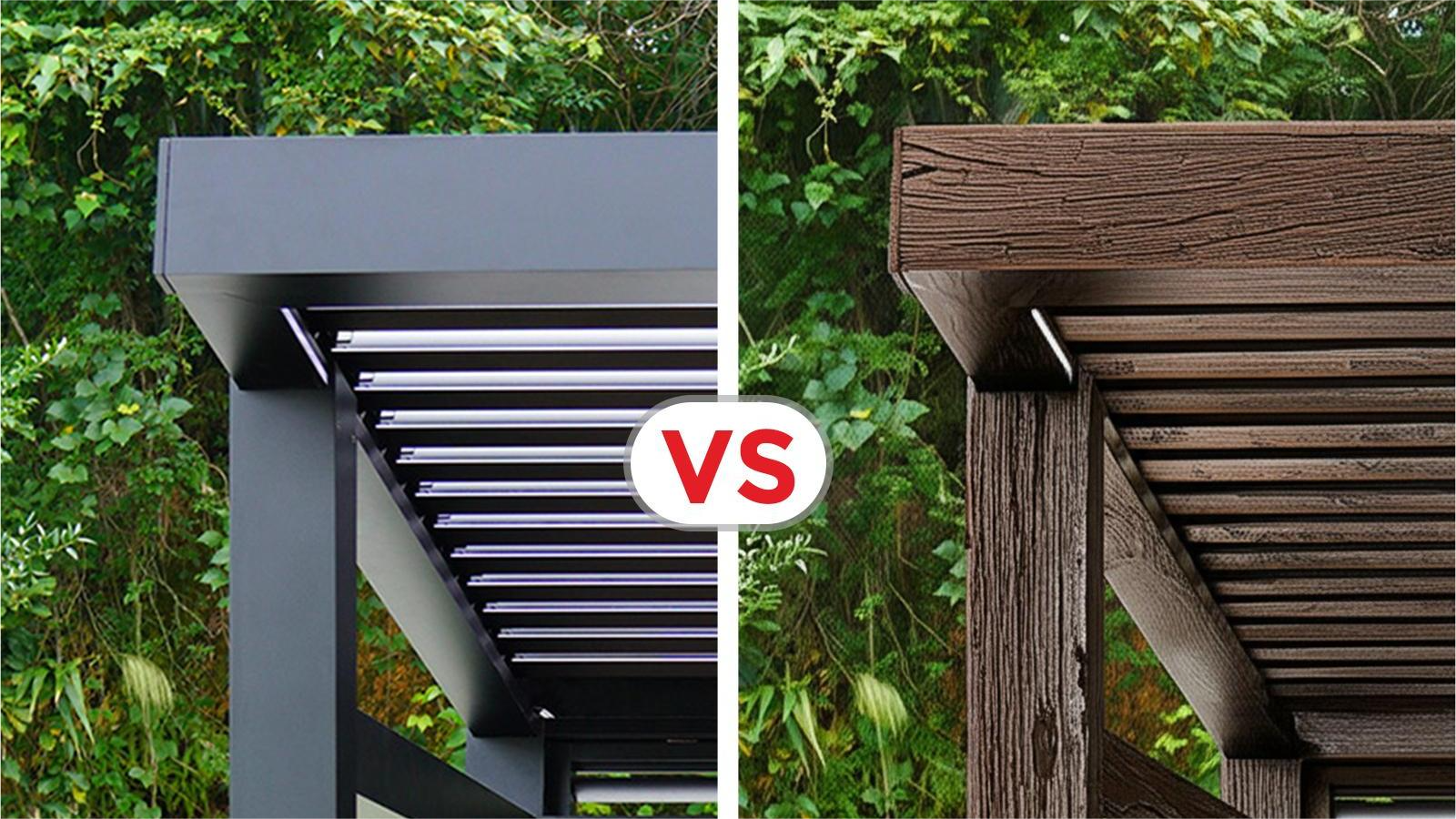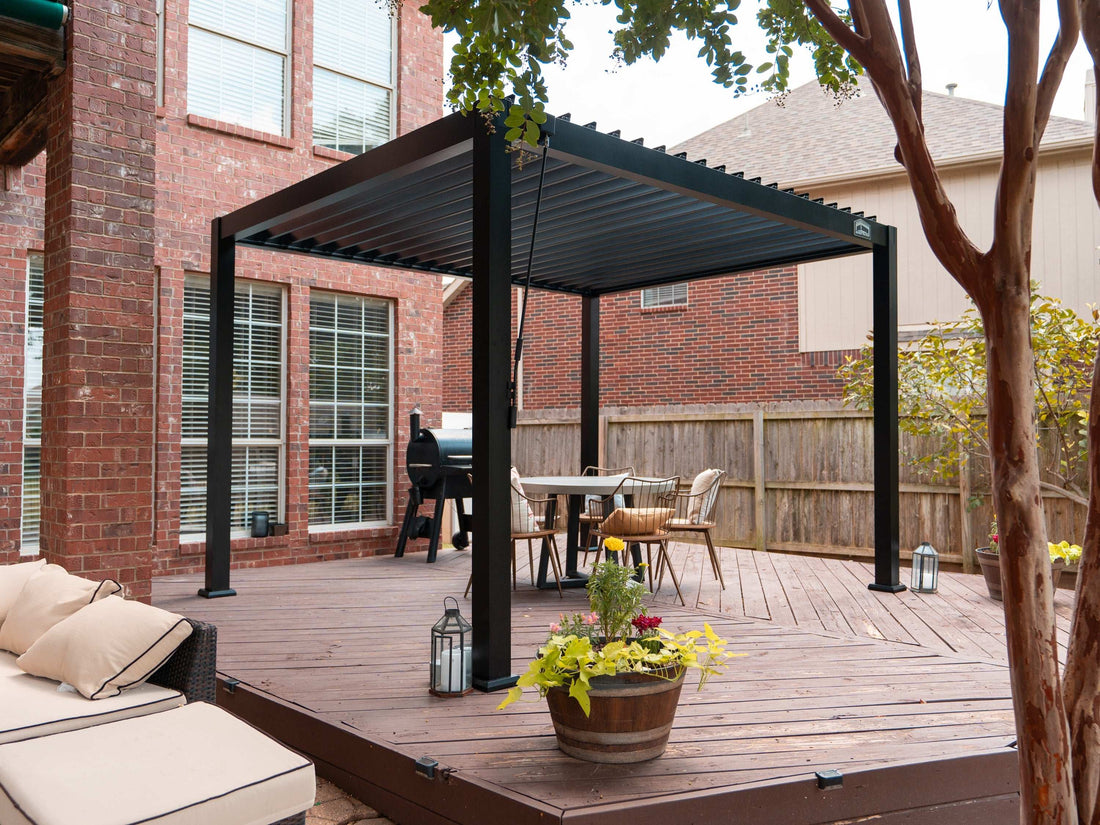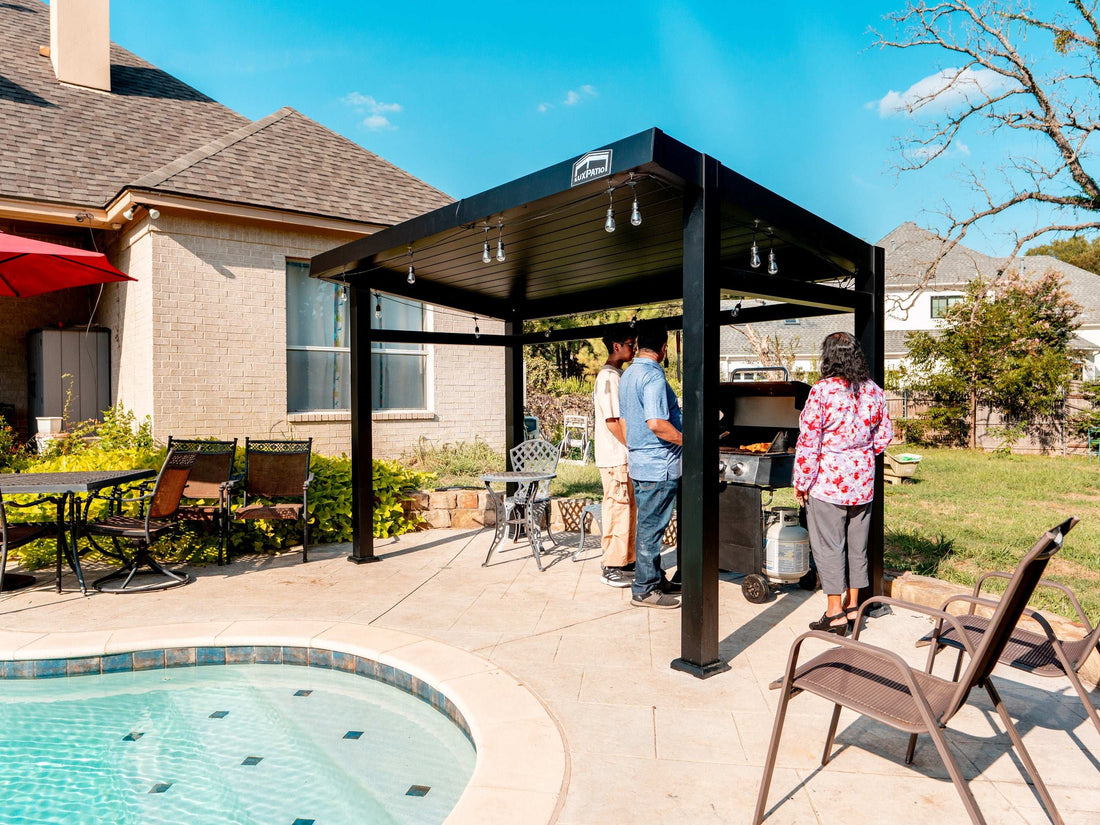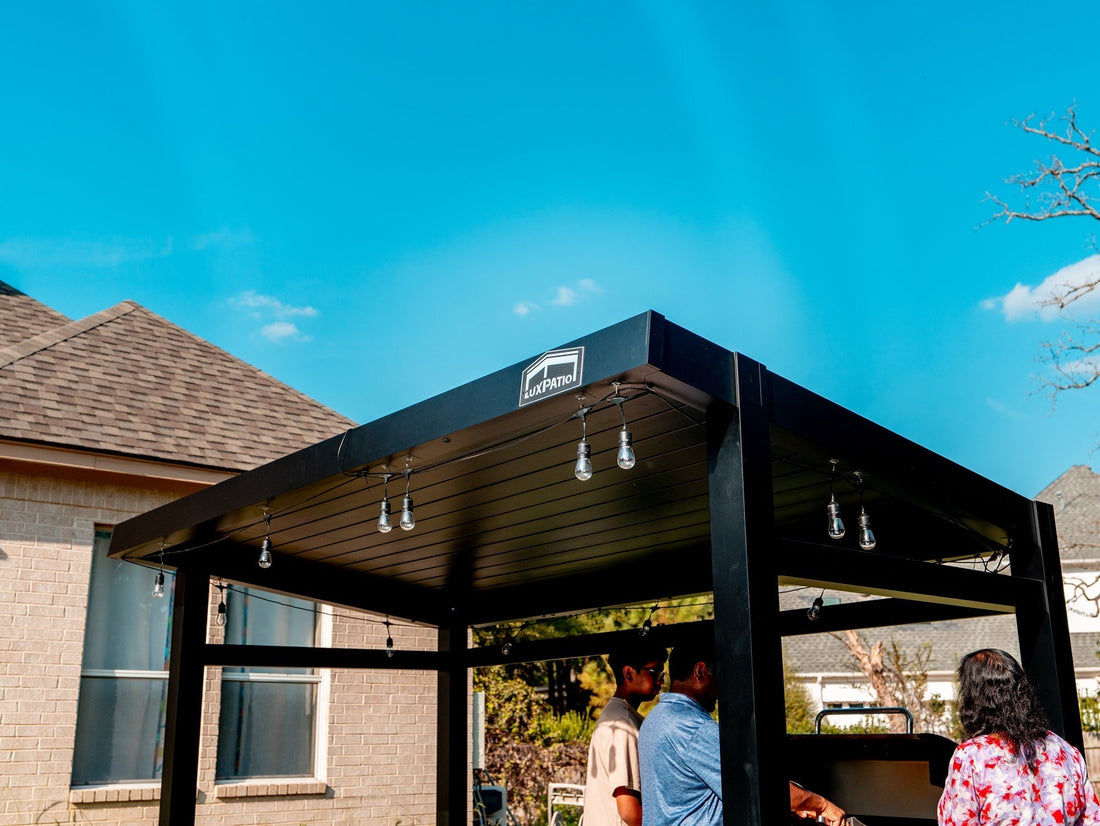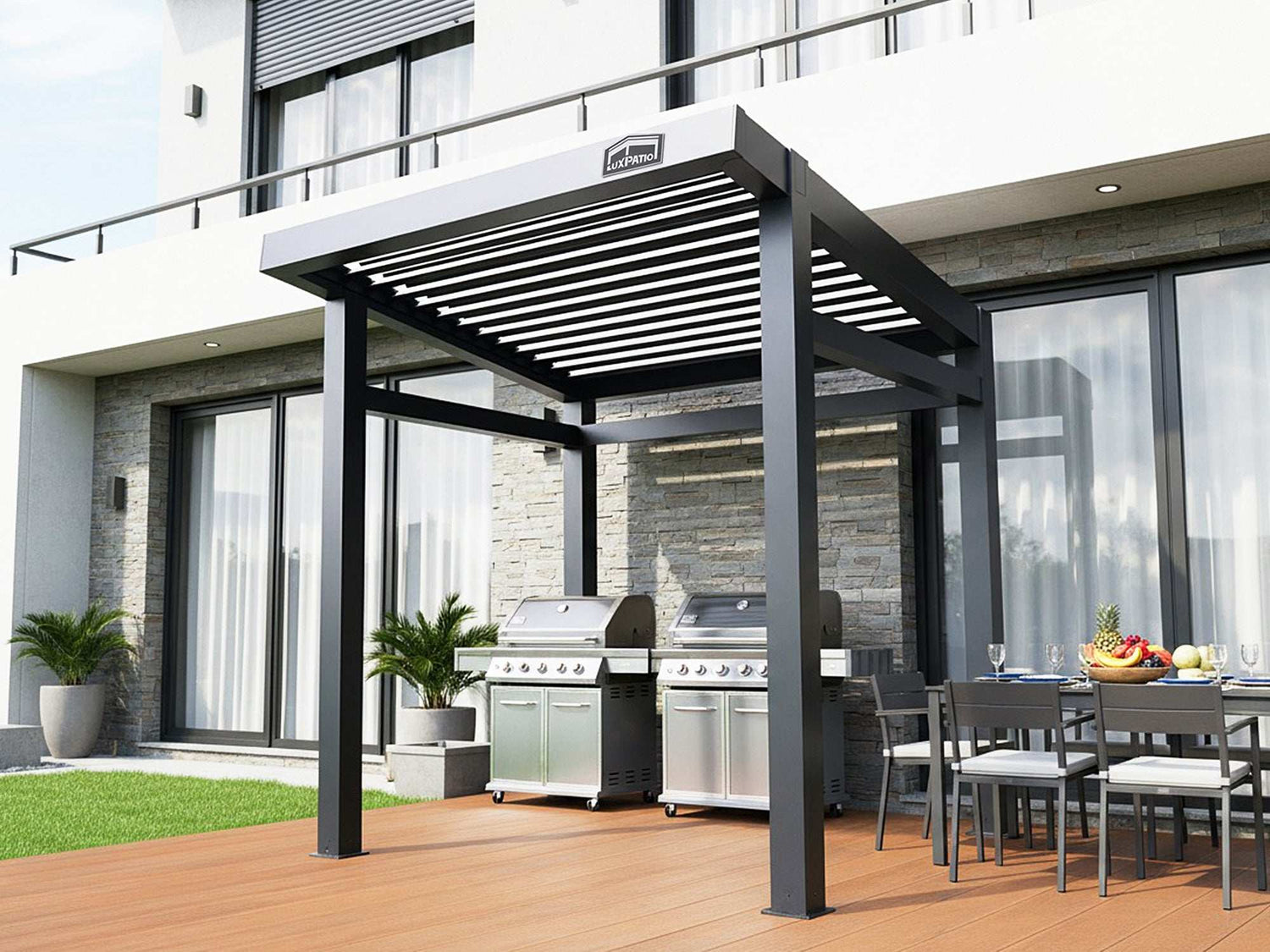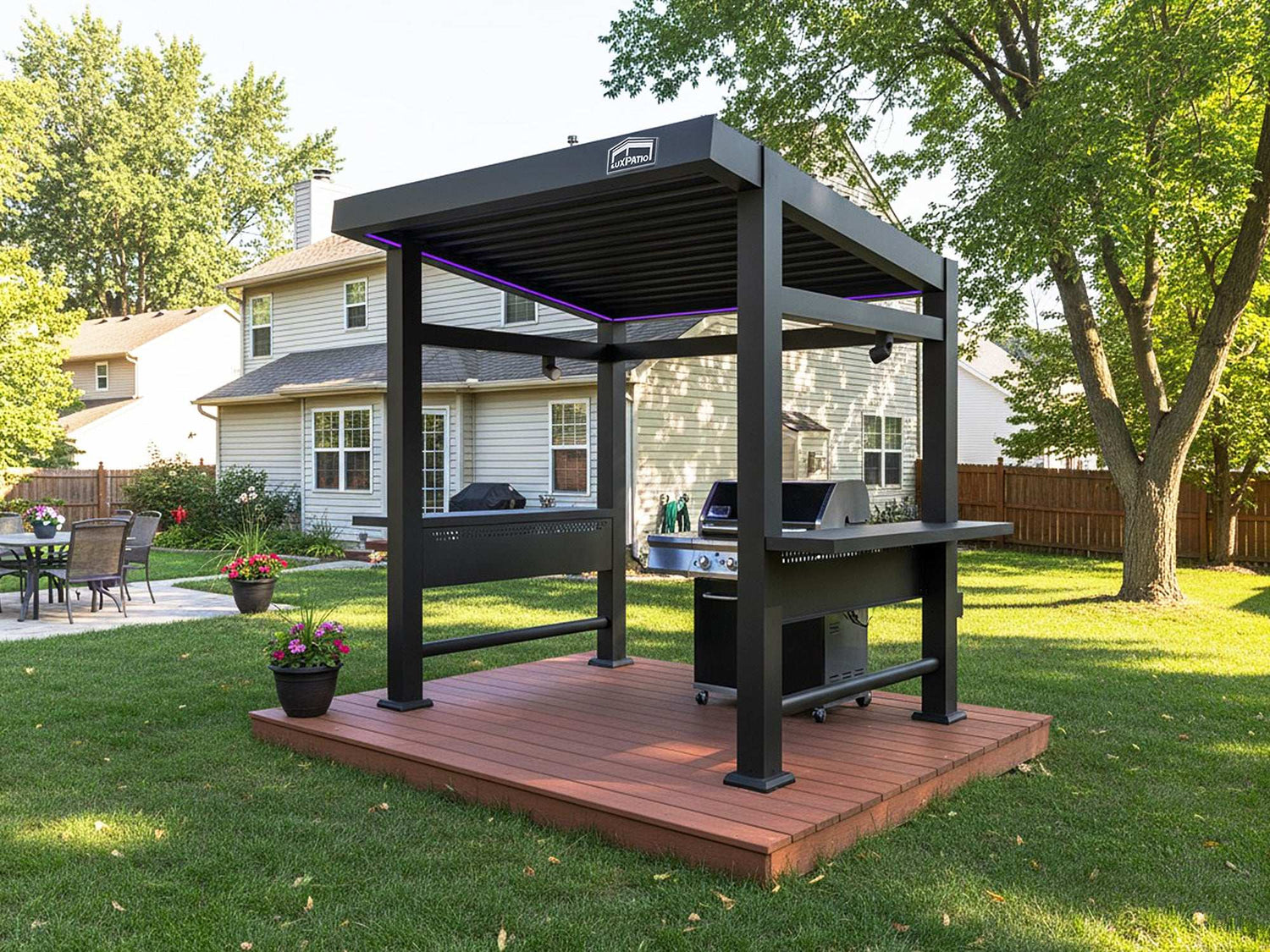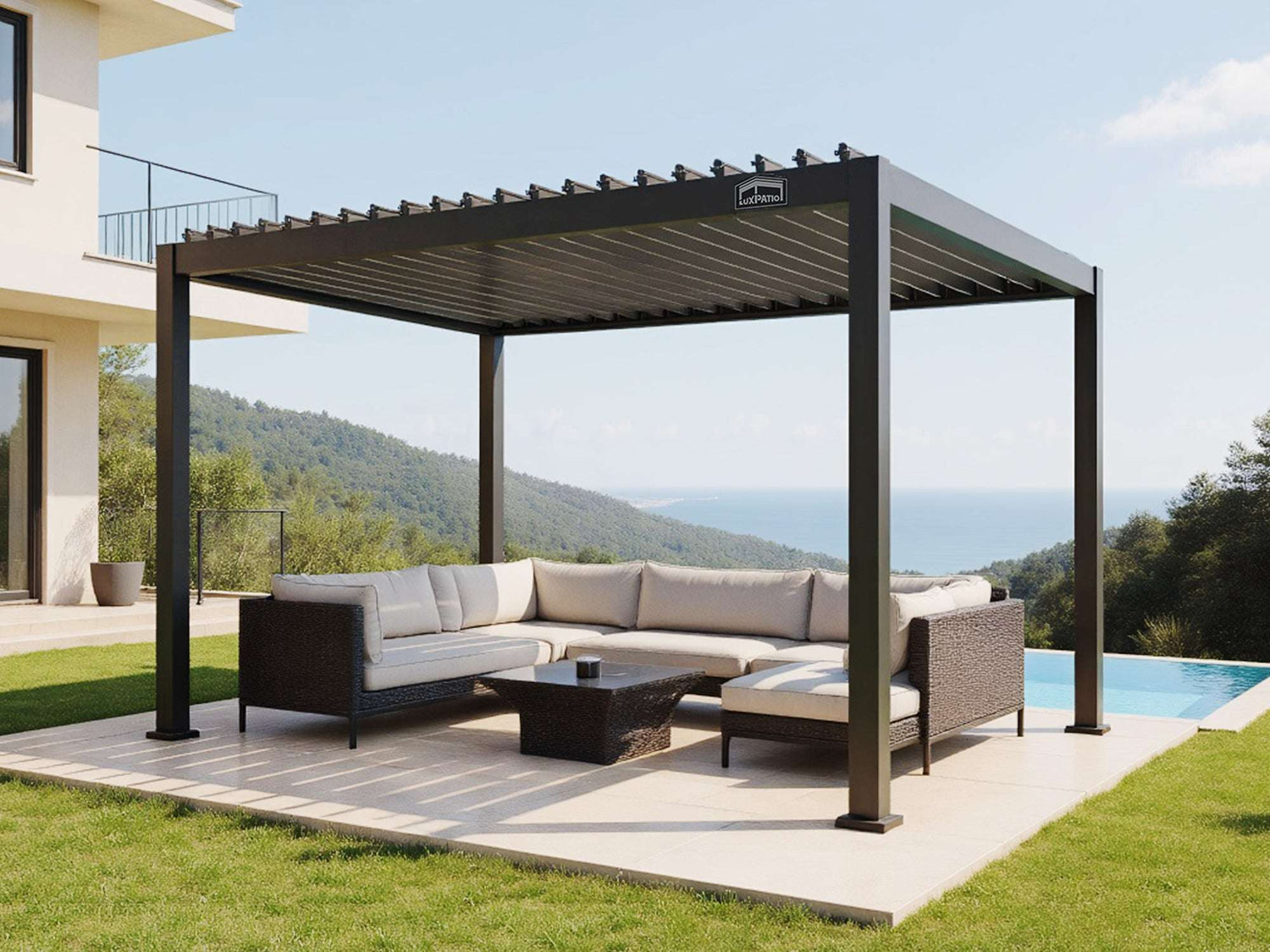When it comes to choosing the right pergola materials for your outdoor space, the debate between aluminum and wood pergolas takes center stage. Both materials bring unique advantages to the table, and depending on your preferences, climate, and aesthetic goals, either can be a great fit.
In this guide, we’ll walk you through a series of practical questions and comparisons to help you decide which pergola type aligns best with your long-term goals.

Aluminum vs Wood Pergolas: Which Material Offers Long-Lasting Performance?
Durability is a key factor when investing in a pergola. Aluminum pergola kits, especially those made from 6063 T5 high-grade aluminum, are engineered to resist warping, cracking, and rotting. The materia resists humidity-related corrosion, and withstands 50 psf snow loads and 85 MPH winds.
Wood, on the other hand, has its own strengths. High-quality varieties like cedar and redwood can perform well outdoors, particularly when properly treated. However, untreated or poorly maintained wood is more prone to moisture damage and insect activity, which can impact long-term stability.
In regions like Florida or coastal California, where intense sun, salt air, and humidity accelerate material degradation, aluminum’s resilience offers a practical advantage. Yet, in milder or drier climates, treated wood can still provide satisfactory performance for years.

Which Pergola Material Requires Less Maintenance?
Maintenance expectations can heavily influence your material choice.
Wood pergolas bring a classic, handcrafted charm, but that beauty often comes with upkeep. Regular staining, sealing, and inspections are required to prevent rot, cracking, and insect damage. Over time, these routine maintenance tasks add up, both in effort and cost.
Aluminum pergolas are typically powder-coated, making them resistant to fading, peeling, and rust. They require only occasional cleaning to maintain their appearance. For homeowners prioritizing simplicity and low ongoing effort, aluminum presents a compelling case.
Still, some homeowners enjoy the ritual of caring for wood structures—reapplying stains or changing finishes to match evolving aesthetics. If that hands-on aspect appeals to you, wood may still be a worthwhile choice.

Which Material Creates a Stronger Visual Impact: Wood or Aluminum?
This category is subjective—and that's what makes it interesting.
Wooden pergolas deliver natural warmth, grain texture, and a timeless feel that appeals to those seeking a rustic, cozy, or traditional look. They're especially suitable for cottage-style homes or garden-inspired backyards. The tactile feel and visual richness of wood simply can’t be replicated entirely.
Aluminum pergolas, meanwhile, lend themselves to modern architecture. From matte black to woodgrain finishes, aluminum structures can suit a wide range of design styles, including contemporary, minimalist, or even transitional themes. Many aluminum kits now mimic the look of wood through advanced powder coatings, providing a wood-like finish without the associated maintenance.
Ultimately, visual impact depends on the setting and how well the pergola blends with your existing landscape and home design. Some homeowners even choose aluminum pergolas finished in wood tones to bridge aesthetics and function.

Which Pergola Is Easier to Install?
Installation effort can significantly affect project timelines and budgets.
Aluminum pergola kits are often favored for DIY projects. Their components are usually pre-cut, pre-drilled, and designed for modular assembly. This allows for smoother and faster setup—sometimes within half a day using basic tools.
Wooden pergolas, while also available in kits, typically require more precise measurements and carpentry skills. Because wood is heavier and less uniform, installation can involve additional tasks like sanding, cutting, and reinforcing joints.
For example, if you're installing a freestanding pergola or mounting to a deck, aluminum offers more flexibility in attachment methods and surface compatibility.
Still, for those who enjoy woodworking and craftsmanship, building a wood pergola from scratch can be a rewarding weekend project. It's all about your comfort level and how hands-on you want to be.

Which Material Performs Better Against the Elements?
Different climates demand different strengths.
In Rainy Climates: Aluminum pergolas with louvered roofs and integrated drainage systems provide a seamless way to manage rainfall. Internal gutters direct water away efficiently, keeping outdoor areas dry and safe. Wood pergolas often require added waterproofing measures or waterproof pergola covers.
In Cold, Snowy Regions: Aluminum can handle high snow loads—some designs support over 1,000 lbs. Its resistance to moisture damage makes it a logical choice in snowy environments. Wood may warp, crack, or split from freeze-thaw cycles unless meticulously maintained.
In Hot, Sunny Climates: Aluminum reflects UV rays and stays cooler to the touch. It doesn’t fade or become brittle with sun exposure. Wood may darken, crack, or splinter over time under consistent sunlight unless regularly treated.
In High-Wind Areas: Metal pergola kits with reinforced joints and hurricane-rated roofs provide enhanced wind resistance. In coastal or storm-prone areas like Texas, aluminum pergolas often meet code requirements more easily than wooden structures.
That said, wood pergolas—especially when built with thick posts and robust bracing—can also withstand substantial weather stress. It's just that they may require more upkeep to retain their structural integrity over time.

Product Comparison Table: Aluminum vs Wood Pergolas
| Feature | Aluminum Pergola Kits | Wood Pergolas |
| Tilt Angle | Adjustable louvers (0°–110°) | Fixed or custom-built |
| Load Capacity | Up to 50 psf snow loads | Varies based on type/grade |
| Corrosion Resistance | High (6063 T5 high-grade aluminum) | Low (requires sealing/staining) |
| Customization | Modular, modern & woodgrain options | Highly customizable |
| Lifespan | 20–30 years with minimal upkeep | 10–15 years with regular care |
Aluminum pergolas also support modular add-ons like pergola privacy walls, pergola screens, or integrated pergola lights, allowing you to enhance comfort and privacy without structural changes.
What About Cost and Installation Time?
For a standard pergola 10' x 10':
-
Aluminum pergola kits: $3,800–$6,500 depending on features (motorization, louvers, lighting)
-
Wood pergolas: $1,200–$4,500 materials only, plus additional costs for sealing, staining, and potential professional assembly
At first glance, costs are comparable. However, aluminum's lower long-term maintenance needs and ease of installation may result in greater overall value. With fewer material treatments and repairs required, aluminum can be the more economical choice over time.
If you're building a pergola 12' x 12' or scheduling a pergola installation in Texas, aluminum's modular nature also allows for faster project completion—an important consideration for seasonal climates or professional landscapers.
That said, some homeowners may prioritize the handcrafted feel and personalization that comes with custom woodwork. If you're investing in a bespoke outdoor space and value the art of building, wood may align better with your goals.
FAQ: Pergola Material Questions
Q: What’s the most cost-effective pergola material for long-term use? A: Aluminum tends to offer better long-term value due to its durability and low maintenance needs.
Q: Is aluminum or wood better for snowy regions? A: Aluminum is often favored due to its strength and moisture resistance, but treated wood can perform well with proper care.
Q: What’s easier to maintain: wood or aluminum pergolas? A: Aluminum generally requires less upkeep, while wood may need periodic refinishing.
Q: Can I install a louvered pergola by myself? A: Yes, most aluminum kits are DIY-friendly and include step-by-step instructions.
Q: Which pergola is safer—wood or aluminum? A: Aluminum is naturally fire-resistant and impervious to pests. Wood can be safe with proper treatment and inspection.
Q: Which material allows for more design flexibility? A: Aluminum offers a wide range of custom options, including color, finish, louvers, and wall attachments, while wood allows for a classic look with custom craftsmanship.
Final Thoughts: Which Pergola Material Is Best?
Wood and aluminum pergolas both offer compelling benefits. Wood brings natural charm and a handcrafted aesthetic. Aluminum delivers modern functionality, long-term durability, and convenience.
Your choice ultimately depends on your climate, maintenance expectations, design preferences, and budget. If you're looking for a structure that requires less upkeep and provides advanced features like adjustable louvers or hidden drainage, aluminum may be the smarter long-term investment—though not at the expense of beauty or customization.
Whatever your final decision, investing in a high-quality pergola can elevate your outdoor living space and provide enjoyment for years to come.
Ready to explore your options? Upgrade Your Backyard (Save 30% Before August) → Contact Us Today



